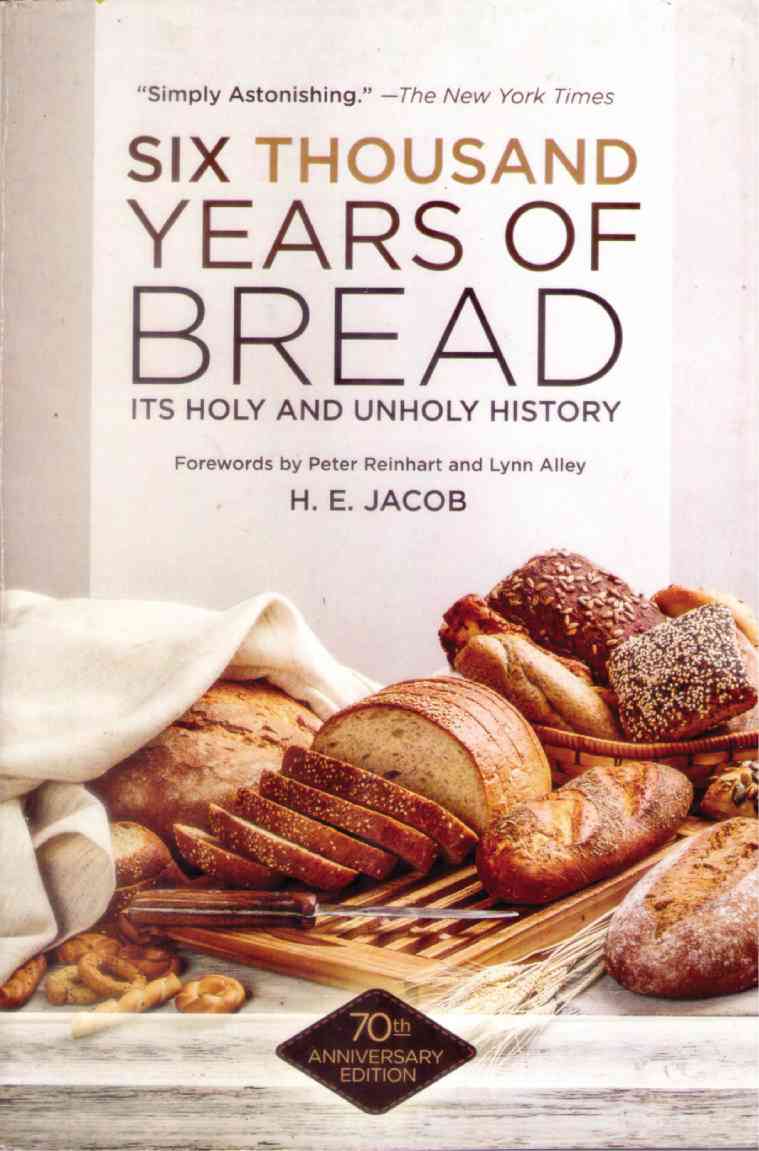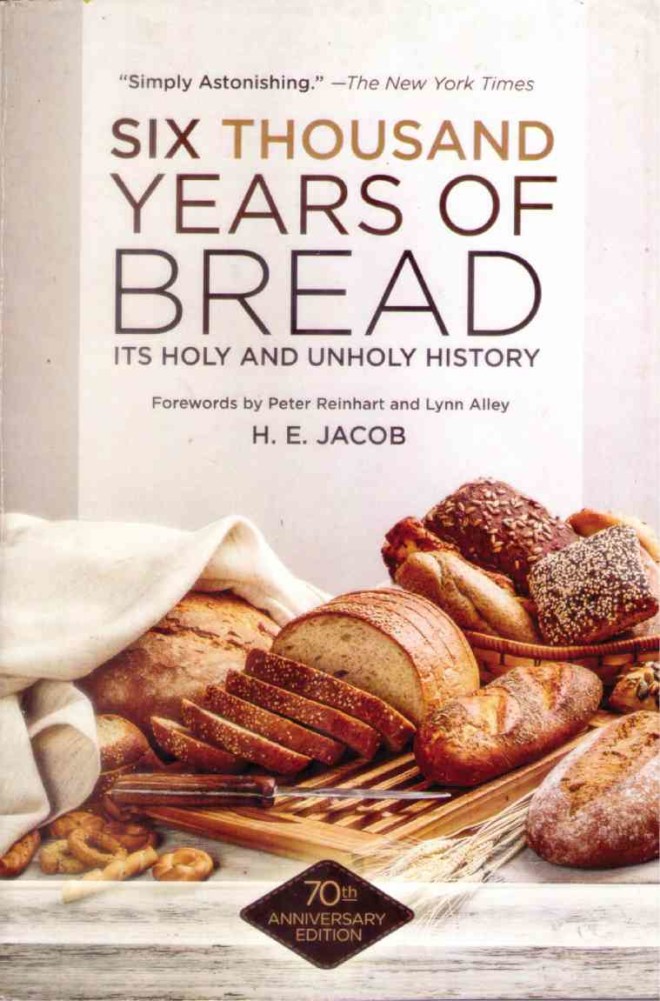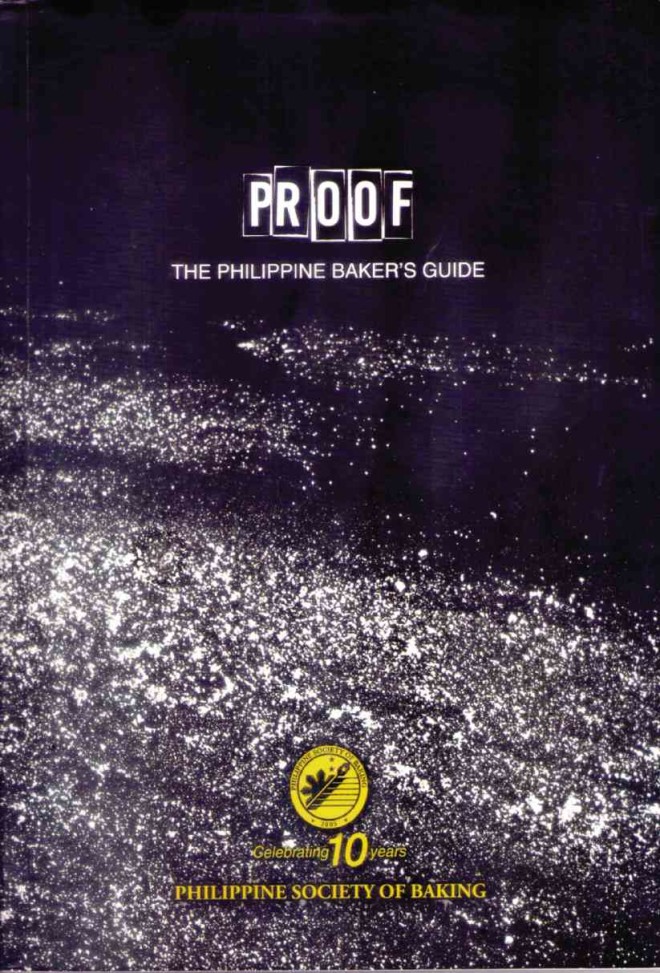IN 1861, Charles Darwin, author of “The Origin of Species,” was said to have addressed the Linnean Society of London, the world’s oldest active biological organization—presenting a letter from a Texas physician who claimed that ants started grain agriculture after studying an ant colony for 12 years.
This story was retold by Heinrich Eduard Jacob at the beginning of his book, “Six Thousand Years of Bread” (Skyhorse Publishing, 2014), originally published in 1944.
With that anecdote, I was hooked and read the more than 300 pages that support Jacob’s thesis that bread and human history are linked.
The book’s subtitle, “Its Holy and Unholy History,” reinforces this thesis. The chapters start with Prehistoric Man, then go through the Ancient World, the Middle Ages, Early American, the Nineteenth Century, and wind down to “Bread in Our Time,” or the period after World War I when Hitler rose to rule Germany.
Right plants
Jacob, who was born in Vienna to an affluent family, worked as a journalist, was arrested by the Nazis (because he was Jew), incarcerated in the Dachau and Buchenwald concentration camps, and eventually rescued through the efforts of his wife and American uncle who sponsored his American citizenship.
He then lived in New York where he wrote the book, originally in German and then translated into English in 1944.
As the story goes, before there was bread, the plow had to be invented, and the right plants identified as sources of food: millet, oat, barley, wheat, rye and maize. The milling process came next, and here Jacob cites how the miller was often regarded as “the evil man.”
He says the Egyptians invented the oven and then baking.
Bread and religion are also intertwined, such as the Greeks’ Bread Church of Eleusis and the bread of Jesus Christ, a major element in the Catholic doctrine of Transubstantiation.
Bread and politics take up a major part of the book; the reader is brought through the Roman ages where “flour was the mortar of life, eaten by rich and poor and which the Roman soldiers carried in sacks on the ends of their lances when they conquered the world.”
Peasant rebels
World history says that bread, or the lack of it, led to the French revolution, and that science and technology made America the “Empire of Wheat,” beginning with Cyrus McCormick’s invention of the mechanized reaper.
More grim was Hitler’s pacte de famine, his plan to depopulate Europe by giving less food to the Poles and almost none to the Jews, and then let the Germans take over their lands and possessions.
Jacob related how he ate what Buchenwald inmates considered bread—a mixture of potato flour, peas and sawdust.
Yet peasants also play a big part in the story—the tillers of the soil who were reviled for smelling of earth, deceived with promises of land, and whose cause leaders would always make their own.
In the chapter “The Peasant Rebels,” Jacob mentions American poet Edwin Markham was inspired by the painting of Jean Francois Millet, “The Man with the Hoe.”
Then I remembered having memorized that poem in high school, reciting it in one of the elocution contests but hardly understood the lines at the time: “Bowed by the weight of centuries he leans/ Upon his hoe and gazes on the ground/ The emptiness of ages in his face/ And on his back the burden of the world.”
‘Panaderia’
The book was a gift from Amy Uy, co-author of “Panaderia: Philippine Bread, Biscuit and Bakery Traditions,” who wrote in her dedication that she hoped “Panaderia” would not take as long as 6,000 years to be published.
“Panaderia” recently won third in the Bread Books category of the 2016 International Gourmand Awards.
Jenny Orillos, “Panaderia” co-author, likewise wrote the book “Proof: The Philippine Baker’s Guide,” published by The Philippine Society of Baking. The Society provides technical seminars on bakery production. The book, a project to mark the group’s 10th anniversary, is a complement to the Certified Pinoy Baker Program, said the group’s president, Christopher C. Ah.
“Proof” in baking is that period when the bread rises as a result of fermentation. It is the perfect title, because it speaks to the baker. It is proof, indeed, of the Society’s efforts to upgrade skills and encourage the creation of new products through this tangible and helpful guide.
Technical chapters
Among its technical chapters is Bakery Math, which teaches readers cost control and how to ensure consistency in product quality.
The chapter on tools and equipment made me smile and remember that the old bakeries we visited in the provinces still used plastic food containers or tin cans as their measuring tools, and bottles in lieu of rolling pins.
“Proof” is not only a handy guide, but also a beautifully photographed and designed book. This got me thinking that the book “Kulinarya: A Guidebook to Philippine Cuisine” should have a corresponding teaching tool to accompany the nicely done coffee-table book presentation.
The original plan had a provision to have a smaller, cheaper version to be distributed not only to culinary schools but all learning institutions. That way it will fulfill the goal of the Kulinarya program—to promote Filipino culture through food, and to encourage best practices in preparation, cooking and presentation.
Avail of “Proof” by e-mailing [email protected], and at online bookstore www.thekitchenbookstore.com.
E-mail the columnist at pinoyfood04@
yahoo.com.











































